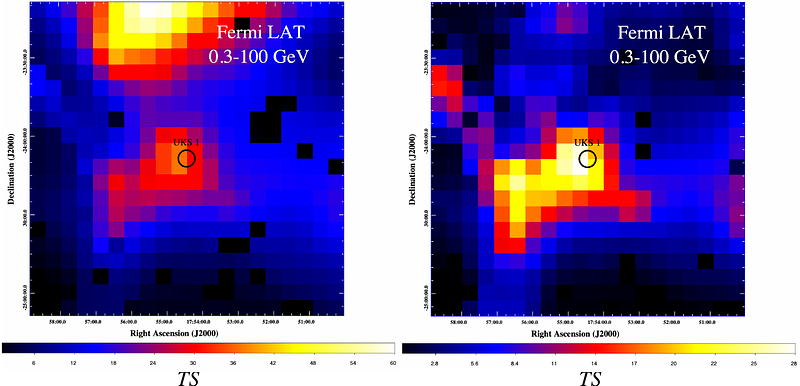A possible GeV-TeV connection in the direction of the Globular Cluster UKS 1

A possible GeV-TeV connection in the direction of the Globular Cluster UKS 1
Jiwon Shin Chungnam National University, C. Y. Hui Chungnam National University, Sangin Kim Chungnam National University, Kwangmin Oh Michigan State University, Ellis R. Owen RIKEN Osaka University
AbstractUsing public data collected by the Fermi Large Area Telescope (LAT) over 16 years, and the 1523 days of survey data (3HWC) from the High Altitude Water Cherenkov (HAWC) observatory, we searched for possible GeV-TeV connections in globular clusters (GCs). In addition to the confirmed $\gamma-$ray GCs in the 4FGL catalog, we report a GeV detection at the position of UKS 1 with a post-trial probability of $\sim8\times10^{-5}$ of it being a fluctuation. Its spectrum within this energy range is well described by a power-law model with $\Gamma\simeq2.3\pm0.5$. Furthermore, this GeV feature appears to extend southeast in a direction towards the Galactic plane. From the 3HWC survey data, we have also identified a TeV feature in the direction of UKS 1. It is well-resolved from any known Very High Energy (VHE) source. The post-trial probability that this feature is a fluctuation is $\sim3\times10^{-4}$. If confirmed, this would be the second detection of a TeV feature in the proximity of a GC. While the GeV emission mostly coincides with the center of UKS 1, the TeV peak is displaced from the cluster center by several tidal radii in the trailing direction of the GC's proper motion. Given the supersonic speed of UKS 1 at $\sim270$ km s$^{-1}$, our findings are consistent with a scenario where the VHE $\gamma-$rays are produced by inverse Compton scattering between relativistic particles and ambient soft photon fields during the course of their propagation away from the head of the bow shock.